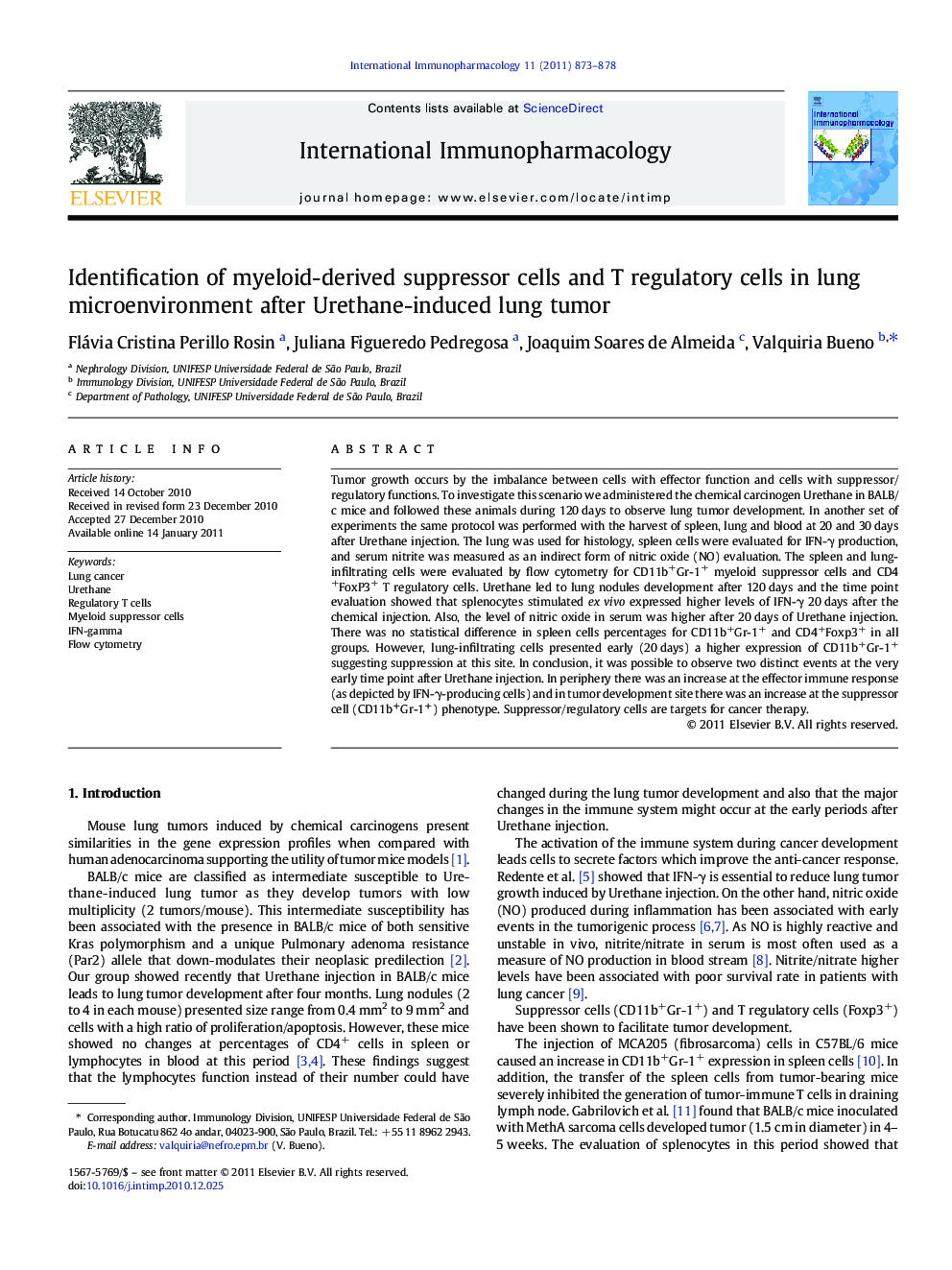| Article ID | Journal | Published Year | Pages | File Type |
|---|---|---|---|---|
| 5834043 | International Immunopharmacology | 2011 | 6 Pages |
Abstract
Tumor growth occurs by the imbalance between cells with effector function and cells with suppressor/regulatory functions. To investigate this scenario we administered the chemical carcinogen Urethane in BALB/c mice and followed these animals during 120 days to observe lung tumor development. In another set of experiments the same protocol was performed with the harvest of spleen, lung and blood at 20 and 30 days after Urethane injection. The lung was used for histology, spleen cells were evaluated for IFN-γ production, and serum nitrite was measured as an indirect form of nitric oxide (NO) evaluation. The spleen and lung-infiltrating cells were evaluated by flow cytometry for CD11b+Gr-1+ myeloid suppressor cells and CD4+FoxP3+ T regulatory cells. Urethane led to lung nodules development after 120 days and the time point evaluation showed that splenocytes stimulated ex vivo expressed higher levels of IFN-γ 20 days after the chemical injection. Also, the level of nitric oxide in serum was higher after 20 days of Urethane injection. There was no statistical difference in spleen cells percentages for CD11b+Gr-1+ and CD4+Foxp3+ in all groups. However, lung-infiltrating cells presented early (20 days) a higher expression of CD11b+Gr-1+ suggesting suppression at this site. In conclusion, it was possible to observe two distinct events at the very early time point after Urethane injection. In periphery there was an increase at the effector immune response (as depicted by IFN-γ-producing cells) and in tumor development site there was an increase at the suppressor cell (CD11b+Gr-1+) phenotype. Suppressor/regulatory cells are targets for cancer therapy.
Related Topics
Life Sciences
Immunology and Microbiology
Immunology
Authors
Flávia Cristina Perillo Rosin, Juliana Figueredo Pedregosa, Joaquim Soares de Almeida, Valquiria Bueno,
